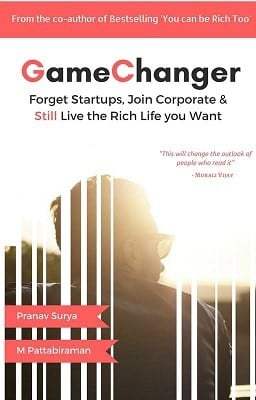This article discusses how a debt mutual fund works in simple language. The
ELI5 in the title stands for “explain like I am 5”. We all know how a fixed deposit works. The bank borrows money from us and pays interest regularly or upon maturity. This is also how a bond works.
Now consider three FDs of 1Y, 5Y and 10Y durations. Let’s open an FD with a reliable bank or, better still, with the post office (with a sovereign guarantee) and not touch it until maturity. Then there is practically zero risk (unless the currency collapses, but let us not get macabre).
Let us assume that selling these FDs to someone else before maturity is possible. This is possible only with bonds, but let us use FDs to keep things simple. Now, the fun begins!
What price would you sell the FDs if the initial purchase price was Rs. 1000? The price will depend on demand. Suppose your 1Y FD has an interest rate of 5%, 5Y FD (6%) and 10Y FD (7%).
If a new 1Y FD is available at 4%, then you can sell your 1Y FD at a price higher than Rs. 1000. This is because the buyer will receive interest at 5% for the remainder of the FD term. Moreover, the demand for 5% 1Y FDs will be high, and the price could increase as long as the demand is high.
Join 32,000+ readers and get free money management solutions delivered to your inbox! Subscribe to get posts via email! (Link takes you to our email sign-up form)
🔥Want to create a complete financial plan? Learn goal-based investing? Exclusive access to our DIY tools? Increase your income with your skills? Use this link to enjoy massive discounts on our robo-advisory tool & courses! 🔥
If a new 1Y FD is available at 6%, then you can sell your 1Y FD at a price lower than Rs. 1000. This is because the buyer will only receive interest at 5% for the remainder of the FD term. The demand for 5% 1Y FDs will be low, and the price could keep falling if 1Y FDs are available at rates higher than 5%.
So, the risk increased when you placed your FD in the market for sale. You could either profit or gain depending on the demand for your FD. The price will fluctuate daily.
The same arguments also hold for the 5Y FDs and 1OY FDs. The key difference is that the price of the 5Y FD will oscillate more than the 1Y FD, and the 10 FD will have higher price volatility.
Why? If the bond/FD duration is only 1Y, the interest rate difference between existing and new FDs will not be that high. So, the risk of buying such a bond is low. If it were a 5Y bond, the risk of buying mid-term is higher.
For example, the current 5Y rate is 5.5%. The 5Y bond on sale offers 6% interest. It is a good buy. But what if new bonds are available after the sale for 6.5%? Of course, new bonds could also offer only 5%. This uncertainty is higher because the bond maturity period is higher. In the 1Y case, the purchased bond will mature in a few months. Here, it would take much longer. Naturally, the uncertainty and, therefore, the price volatility is higher for the 10Y bond.
So, what is a debt mutual fund? Like an equity mutual fund, which predominantly holds stocks, a debt mutual fund holds bonds. The NAV of an equity fund depends on the current market price of the stocks in its portfolio. Similarly, the NAV of a debt fund depends on the current market price of the bonds in its portfolio.
A debt fund NAV changes due to two main reasons: (1) The interest rate of the bonds (which typically always increases the NAV a little each day and (2) the market price of the bonds.
The longer the bond, the more volatile its market price. Similarly the longer the bonds held in a debt funds, the more volatile its NAV
This is known as interest rate risk or duration risk. Like the equity market, participants speculate a lot in the bond market. In the above example, we stated that if a new 1Y FD is available at 4%, you can sell your 1Y (5%)FD at a price higher than Rs. 1000.
Price changes will not wait for new FDs to be released. In the above case, you could sell for a profit if the market expects new FDs to carry lower rates than current ones. So, duration risk is essentially speculation risk or demand and supply risk.
When interest rates are about to increase, the price of existing bonds will fall because of a fall in demand and vice versa.
We can get a reasonable estimate* of this risk by looking at the portfolio’s average maturity. This is the average duration of the bonds in the debt fund portfolio weighted by the amount held.
* This will not work if the fund predominantly holds floating-rate bonds. More on this later.
The second kind of risk is called credit risk. There is a counterintuitive idea in the world of borrowing. Consider two companies trying to raise money via bonds. One is a rock-solid business with low overheads and good profitability, and the other is a shaky business with losses in the past.
A lender will expect a higher interest rate from a shaky business because of the risk they are taking. So, an entity already losing money is expected to shell out more interest. Things can go wrong. The shaky business can fold, and interest payments will not be made, and worse, the principle will also be lost. Typically, there is collateral, but payback can take forever. Remember, a delay in interest payment is a loss, as time is money. This is the credit risk.
So lenders are given a rating by a firm known as the rating agency. Govt bonds are rated “sovereign”. Short-term bonds from sound non-government borrowers are rated A1, and long-term bonds are rated AAA. It is much like grades in school, with each agency having its own code.
There can be a credit event or credit default. This is when rating agencies suddenly decide that a borrower is no longer reliable in paying interest. The bond’s market price would nose dive as there would be no buyers, and the NAV would take a big tumble, too.
A debt fund holding risky bonds offers higher returns (until they don’t)!
A debt fund holding only government bonds is safe from credit risks. However, if the bonds are long-term, the NAV will be volatile. So, we must look at both credit rating profile and average maturity.
Here are some guidelines for choosing debt mutual funds
- Liquid and money market funds typically offer low credit and low interest risks. They can be used for short-term needs.
- As mentioned above, Gilts funds have no credit risk but can have significant duration risk and should only be used for long-term needs.
- A corporate bonds fund offers a reasonable balance between credit risk and duration. risk
Are debt mutual funds a replacement for fixed deposits? No, they are not. Debt fund returns are market-linked and unpredictable. Sometimes, they can do better than FDs and sometimes not.
Learn more about debt mutual funds:
- An introduction to debt mutual funds for new investors.
- Three Key Mutual Fund Terms All Retail Investors Should Know.
- .

Use our Robo-advisory Tool to create a complete financial plan! ⇐More than 3,000 investors and advisors use this! Use the discount code: robo25 for a 20% discount. Plan your retirement (early, normal, before, and after), as well as non-recurring financial goals (such as child education) and recurring financial goals (like holidays and appliance purchases). The tool would help anyone aged 18 to 80 plan for their retirement, as well as six other non-recurring financial goals and four recurring financial goals, with a detailed cash flow summary.
🔥You can also avail massive discounts on our courses and the freefincal investor circle! 🔥& join our community of 8000+ users!
Track your mutual funds and stock investments with this Google Sheet!
We also publish monthly equity mutual funds, debt and hybrid mutual funds, index funds, and ETF screeners, as well as momentum and low-volatility stock screeners.
You can follow our articles on Google News

We have over 1,000 videos on YouTube!

Join our WhatsApp Channel



- Do you have a comment about the above article? Reach out to us on Twitter: @freefincal or @pattufreefincal
- Have a question? Subscribe to our newsletter using the form below.
- Hit 'reply' to any email from us! We do not offer personalised investment advice. We can write a detailed article without mentioning your name if you have a generic question.
Join 32,000+ readers and get free money management solutions delivered to your inbox! Subscribe to get posts via email! (Link takes you to our email sign-up form)
About The Author
 Dr M. Pattabiraman (PhD) is the founder, managing editor and primary author of freefincal. He is an associate professor at the Indian Institute of Technology, Madras. He has over 13 years of experience publishing news analysis, research and financial product development. Connect with him via Twitter(X), LinkedIn, or YouTube. Pattabiraman has co-authored three print books: (1) You can be rich too with goal-based investing (CNBC TV18) for DIY investors. (2) Gamechanger for young earners. (3) Chinchu Gets a Superpower! for kids. He has also written seven other free e-books on various money management topics. He is a patron and co-founder of “Fee-only India,” an organisation promoting unbiased, commission-free, AUM-independent investment advice.
Dr M. Pattabiraman (PhD) is the founder, managing editor and primary author of freefincal. He is an associate professor at the Indian Institute of Technology, Madras. He has over 13 years of experience publishing news analysis, research and financial product development. Connect with him via Twitter(X), LinkedIn, or YouTube. Pattabiraman has co-authored three print books: (1) You can be rich too with goal-based investing (CNBC TV18) for DIY investors. (2) Gamechanger for young earners. (3) Chinchu Gets a Superpower! for kids. He has also written seven other free e-books on various money management topics. He is a patron and co-founder of “Fee-only India,” an organisation promoting unbiased, commission-free, AUM-independent investment advice.Our flagship course! Learn to manage your portfolio like a pro to achieve your goals regardless of market conditions! ⇐ More than 3,500 investors and advisors are part of our exclusive community! Get clarity on how to plan for your goals and achieve the necessary corpus no matter the market condition!! Watch the first lecture for free! One-time payment! No recurring fees! Life-long access to videos! Reduce fear, uncertainty and doubt while investing! Learn how to plan for your goals before and after retirement with confidence.
Increase your income by getting people to pay for your skills! ⇐ More than 800 salaried employees, entrepreneurs and financial advisors are part of our exclusive community! Learn how to get people to pay for your skills! Whether you are a professional or small business owner seeking more clients through online visibility, or a salaried individual looking for a side income or passive income, we will show you how to achieve this by showcasing your skills and building a community that trusts and pays you. (watch 1st lecture for free). One-time payment! No recurring fees! Life-long access to videos!
Our book for kids: “Chinchu Gets a Superpower!” is now available!


Must-read book even for adults! This is something that every parent should teach their kids right from their young age. The importance of money management and decision making based on their wants and needs. Very nicely written in simple terms. - Arun.Buy the book: Chinchu gets a superpower for your child!
How to profit from content writing: Our new ebook is for those interested in getting a side income via content writing. It is available at a 50% discount for Rs. 500 only!
Do you want to check if the market is overvalued or undervalued? Use our market valuation tool (it will work with any index!), or get the Tactical Buy/Sell timing tool!
We publish monthly mutual fund screeners and momentum, low-volatility stock screeners.
About freefincal & its content policy. Freefincal is a News Media organisation dedicated to providing original analysis, reports, reviews and insights on mutual funds, stocks, investing, retirement and personal finance developments. We do so without conflict of interest and bias. Follow us on Google News. Freefincal serves more than three million readers a year (5 million page views) with articles based only on factual information and detailed analysis by its authors. All statements made will be verified with credible and knowledgeable sources before publication. Freefincal does not publish paid articles, promotions, PR, satire or opinions without data. All opinions will be inferences backed by verifiable, reproducible evidence/data. Contact Information: To get in touch, please use our contact form. (Sponsored posts or paid collaborations will not be entertained.)
Connect with us on social media
- Twitter @freefincal
- Subscribe to our YouTube Videos
- Posts feed via Feedburner.
Our publications
You Can Be Rich Too with Goal-Based Investing
 Published by CNBC TV18, this book is designed to help you ask the right questions and find the correct answers. Additionally, it comes with nine online calculators, allowing you to create custom solutions tailored to your lifestyle. Get it now.
Published by CNBC TV18, this book is designed to help you ask the right questions and find the correct answers. Additionally, it comes with nine online calculators, allowing you to create custom solutions tailored to your lifestyle. Get it now.Gamechanger: Forget Startups, Join Corporate & Still Live the Rich Life You Want
 This book is designed for young earners to get their basics right from the start! It will also help you travel to exotic places at a low cost! Get it or gift it to a young earner.
This book is designed for young earners to get their basics right from the start! It will also help you travel to exotic places at a low cost! Get it or gift it to a young earner.Your Ultimate Guide to Travel
 This is an in-depth exploration of vacation planning, including finding affordable flights, budget accommodations, and practical travel tips. It also examines the benefits of travelling slowly, both financially and psychologically, with links to relevant web pages and guidance at every step. Get the PDF for Rs 300 (instant download)
This is an in-depth exploration of vacation planning, including finding affordable flights, budget accommodations, and practical travel tips. It also examines the benefits of travelling slowly, both financially and psychologically, with links to relevant web pages and guidance at every step. Get the PDF for Rs 300 (instant download)